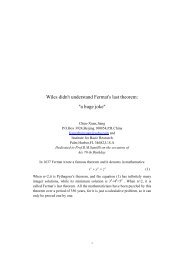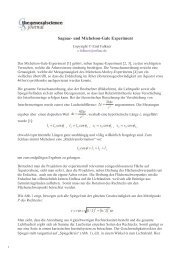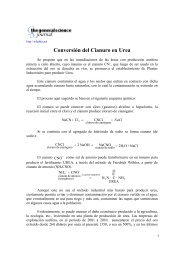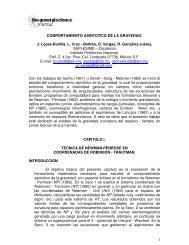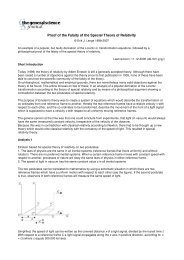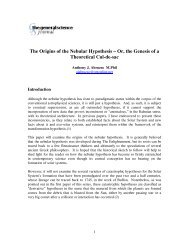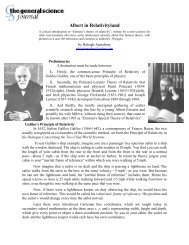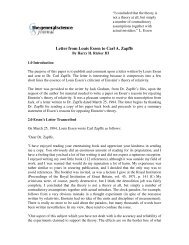MAGNETISM DURING THE SEVENTEENTH CENTURY HH Ricker III
MAGNETISM DURING THE SEVENTEENTH CENTURY HH Ricker III
MAGNETISM DURING THE SEVENTEENTH CENTURY HH Ricker III
You also want an ePaper? Increase the reach of your titles
YUMPU automatically turns print PDFs into web optimized ePapers that Google loves.
sulfur, and potassium nitrate (niter or saltpeter). In the Grossen Wundarznei, Paracelsus gives a<br />
specific and detailed chemical explanation of thunder and lightning as follows:<br />
“The matter of thunder and lightning is a Saltpeter-Sulphur of the Firmament. In the same way<br />
that Sulphur and Salniter grow out of the earth and therefore become ordered together in one<br />
mass and substance, the heavenly materials behave. As an example: as Water grows in the<br />
heavens and then falls on the earth, so may also Fire grow in it. And as snow grows in the<br />
Heavens, so may also Salniter and other things grow out of the fire. Therefore from such things<br />
we should understand that the heavenly lightning is of a heavenly composition made out of the<br />
same materials as spring out of the earth and which through the stars are ordered in such a<br />
behavior and way.” 35<br />
Paracelsus concept of thunder and lightning reminds us of the classical Greek conception of<br />
thunder and lightning as the fall of the burning hot aether from the heavens. The Paracelsian<br />
innovation was to provide a natural definition of the nature of the heavenly fire in terms of the<br />
chemical nature of gunpowder. This provided a connection between the earthly realm and the<br />
heavenly, which appealed to Paracelsus’ spiritual sensibilities and tinged the theory with the<br />
ideas of natural magic and Hermeticism.<br />
The mystical nature of lightning as a spiritual fire and its association with the material elements<br />
has a long tradition going back at least as far as Heracleitus of Ephesus, circa 500 B.C., who<br />
says:<br />
“The transformations of fire: first, sea; and of sea, half becomes earth and half the lightningflash.”<br />
36<br />
The idea of fire in Heracleitus is fundamental, but it is not the fire of the earth, it is the heavenly<br />
fire:<br />
”This universe, which is the same for all has not been made by god or man but it always has<br />
been, is, and will be-an ever-living fire, kindling itself by regular measures and going out by<br />
regular measures.” 36<br />
The most mystical element is within the principle of lightning because Heraclitus tells us that:<br />
”The thunderbolt pilots all things.” 36<br />
Another classical Greek conception, espoused by Anaximendes, was that the air consisted of<br />
both a material principle and a spiritual one. The spiritual principle was the source of life,<br />
conceived as pneuma, present within the air. Anaximendes says:<br />
“As the soul (psychê), which is air (aêr), holds a man together and gives him life, so breath-wind<br />
(pneuma) and air hold together the universe (kosmos) and give it life.” 37<br />
The idea that the soul (anima) was a kind of air, was one to the fundamental ideas of the classical<br />
period.<br />
The innovation which gives significance to Paracelsus ideas is the identification of the spiritual<br />
with the material aspect of the vital fire of life. This is not specifically clear from the quotation



